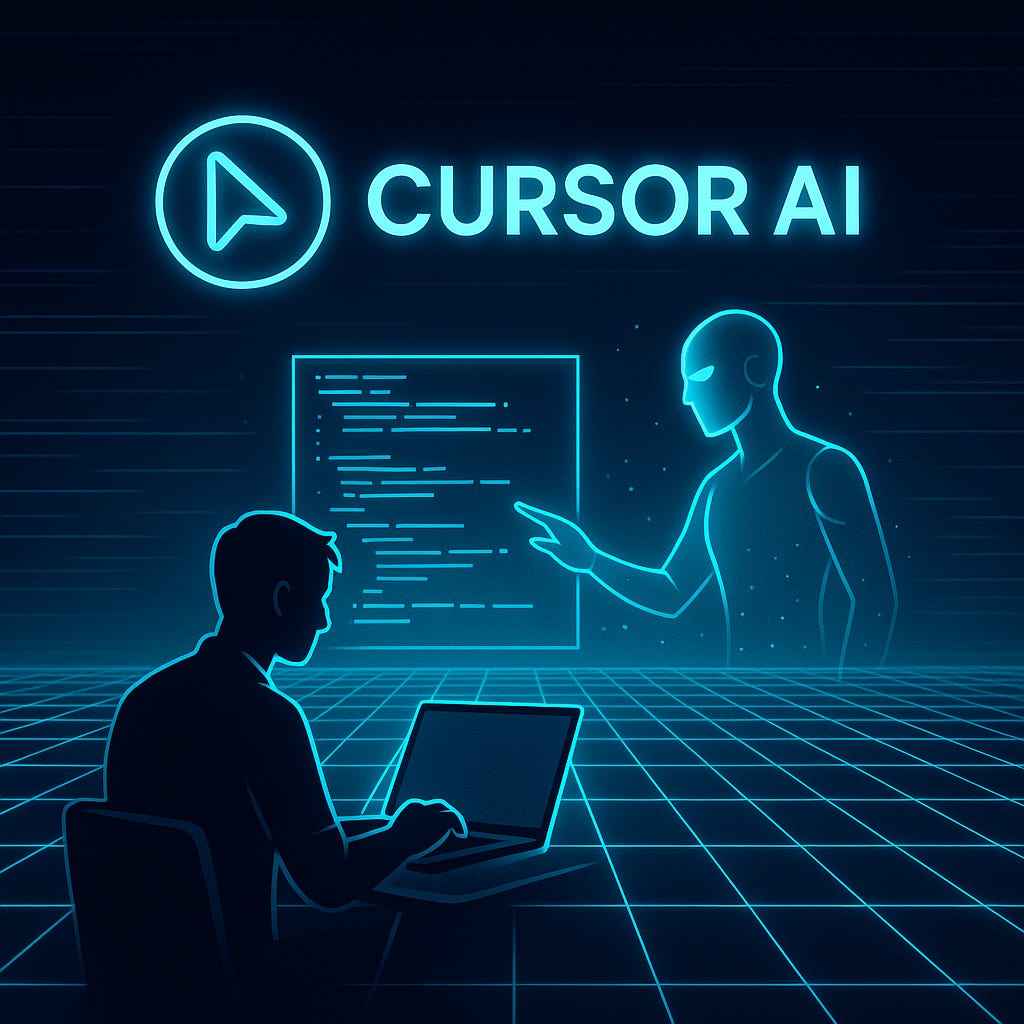Cursor AI: Your AI-Augmented IDE
In the evolving landscape of software development, Cursor AI asserts itself not just as another code editor, but as a thoughtfully engineered, AI-native integrated development environment that empowers developers to work more fluidly, insightfully, and productivity-wise. At its core, Cursor is a fork of Visual Studio Code, enriched with deep AI integration. It extends the familiar VS Code environment with intelligent code generation, smart refactoring, code-aware chat, and privacy-first architecture — all aimed at reimaging how we interact with code and tools.
Cursor was created by the startup Anysphere, founded in 2022 by four MIT alumni, and has quickly scaled: by mid-2025, it achieved a valuation approaching $10 billion and annual recurring revenue exceeding $500 million. Major adopters include developers at prominent companies like Stripe, OpenAI, Shopify, and Spotify, while industry commentary even coins “vibe coding” to capture the near-intuitive fluency users experience when working with Cursor.
Core Capabilities and Design Principles
Cursor’s design merges robust AI capabilities with trusted developer ergonomics. In technical layers that a pattern-recognition researcher will appreciate, it integrates:
AI-powered code editing and autocompletion, including multi-line suggestions and smart rewrites based on recent code context.
Natural-language-driven refactorings — select a block of code, hit
Ctrl + K(Cmd + K on Mac), and write an instruction like “Optimize this function for memory usage,” and Cursor rewrites accordingly.Codebase-aware chat, where Cursor indexes your repository and allows conversational queries such as “Where is the API client defined?” or “Which tests cover user login?” — delivering responses grounded in your actual files.
Agent-style automation, enabling task delegation — Cursor’s “Agent mode” (triggered via
Ctrl + I) can enact end-to-end changes while keeping you informed throughout.Integrated terminal and command execution, with intelligent generation of shell commands (subject to confirmation), ensuring a seamless, context-rich workflow.
Privacy and security, including an optional Privacy Mode assuring that your code remains local unless you explicitly allow remote usage. Cursor is SOC-2 certified.
Design thinking lies behind these features: Cursor is not a chat interface bolted onto a code editor; it’s an IDE where AI and codebase insights are native, deep, and responsive.
Examples of Cursor in Action
Let’s animate these capabilities with concrete examples, steering clear of list formatting but preserving clarity through narrative progression.
Imagine you’ve just started working in a legacy repository dealing with AWS integration. You open the chat sidebar (or press Ctrl + L on Windows or Cmd + L on Mac) and type, “Show me where SNS topics are created in this project.” Cursor scans the codebase and surfaces the relevant module with context. You can ask follow-ups like, “Refactor that to support FIFO topics,” and Cursor applies a multi-line rewrite instantly.
On another occasion, suppose you’re writing in Python and need a utility function to batch-send messages using AWS SQS. Instead of opening a new document or searching online, you type natural-language instructions in the chat — “Create a function to poll messages from AWS SQS and handle rate-limits.” Cursor composes the full function, including imports, error handling, and JSON parsing.
Even mundane but critical tasks — like cleaning up code — are a breeze: highlight a loop and instruct “Transform this into a list comprehension.” Cursor automatically rewrites it. Minor typos are smoothed over, thanks to its smart rewrite abilities.
And when debugging, the integrated terminal might capture a stack trace. Ask “What’s wrong here?” and Cursor can analyze the trace and suggest fixes, tying them directly back into the codebase.
Looking Ahead: “Vibe Coding” and Productivity Trends
Cursor exemplifies the broader shift in software engineering toward more intuitive human-AI collaboration. As succinctly captured by “vibe coding,” a term coined to describe a flow state where thinking in plain language yields code invisibly generated, Cursor represents an IDE where the boundary between thought and implementation blurs.
Executives at Amazon and Google, despite possessing internal tools, have adopted Cursor — highlighting its unique appeal and productivity gains. Yet even as enthusiasm grows, Cursor’s CEO maintains a realist’s perspective, emphasizing that fully autonomous, AI-only programming remains years away. Instead, he sees Cursor as augmenting — not replacing — human developers.
Further Reading: Tutorials and Deep Dives
Below are a few high-quality tutorials and guides that elaborate on Cursor’s usage, workflows, and system design. They complement this introduction and serve as excellent starting points:
Moritz Kremb’s “Cursor AI Tutorial For Beginners” offers a welcoming walkthrough of what Cursor is, how to install it, and how to begin building with AI prompts. Reference: Prompt Warrior
The DataCamp article “Cursor AI: A Guide With 10 Practical Examples” illustrates how Cursor compares to other AI coding tools and provides concrete examples of autocompletion, chat features, and model use.Reference: datacamp.com
On Medium, “Getting Started with Cursor AI” offers a hands-on explanation of interface navigation, inline editing with
Ctrl + K, chat usage, Composer mode, and working with the terminal.Reference: MediumFor architectural insight, Shrivu Shankar’s blog “How Cursor (AI IDE) Works” delves into the design of Cursor’s agent workflows and how large language models drive its behavior. Reference: blog.sshh.io
In Conclusion
Cursor AI reimagines the IDE as a collaborative partner — one that anticipates multi-line edits, comprehends entire codebases, responds to natural-language prompts, and executes complex tasks with precision and contextual awareness. Developed by Anysphere, Cursor has already become a transformative tool in developer ergonomics, productivity, and workflow innovation.
Whether you’re refactoring legacy code, constructing new functions in natural language, or entering a state of “vibe coding,” Cursor offers a seamless bridge between intent and implementation. The journey from idea to code has never felt more direct, intelligent, or elegant.
If you liked this blog post, I recommend having a look at our free deep learning resources or my YouTube Channel.
Text and images of this article are licensed under Creative Commons License 4.0 Attribution. Feel free to reuse and share any part of this work.


